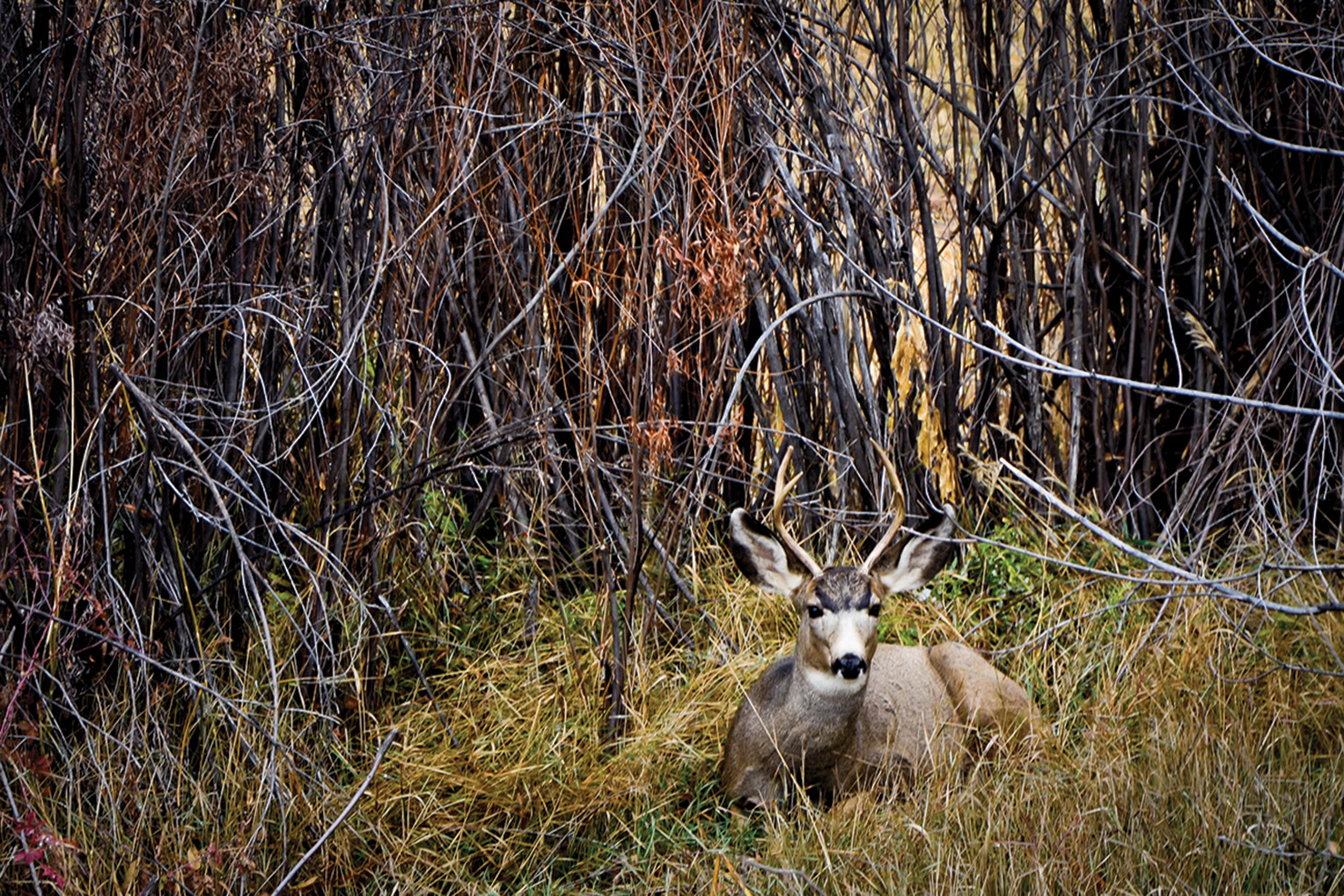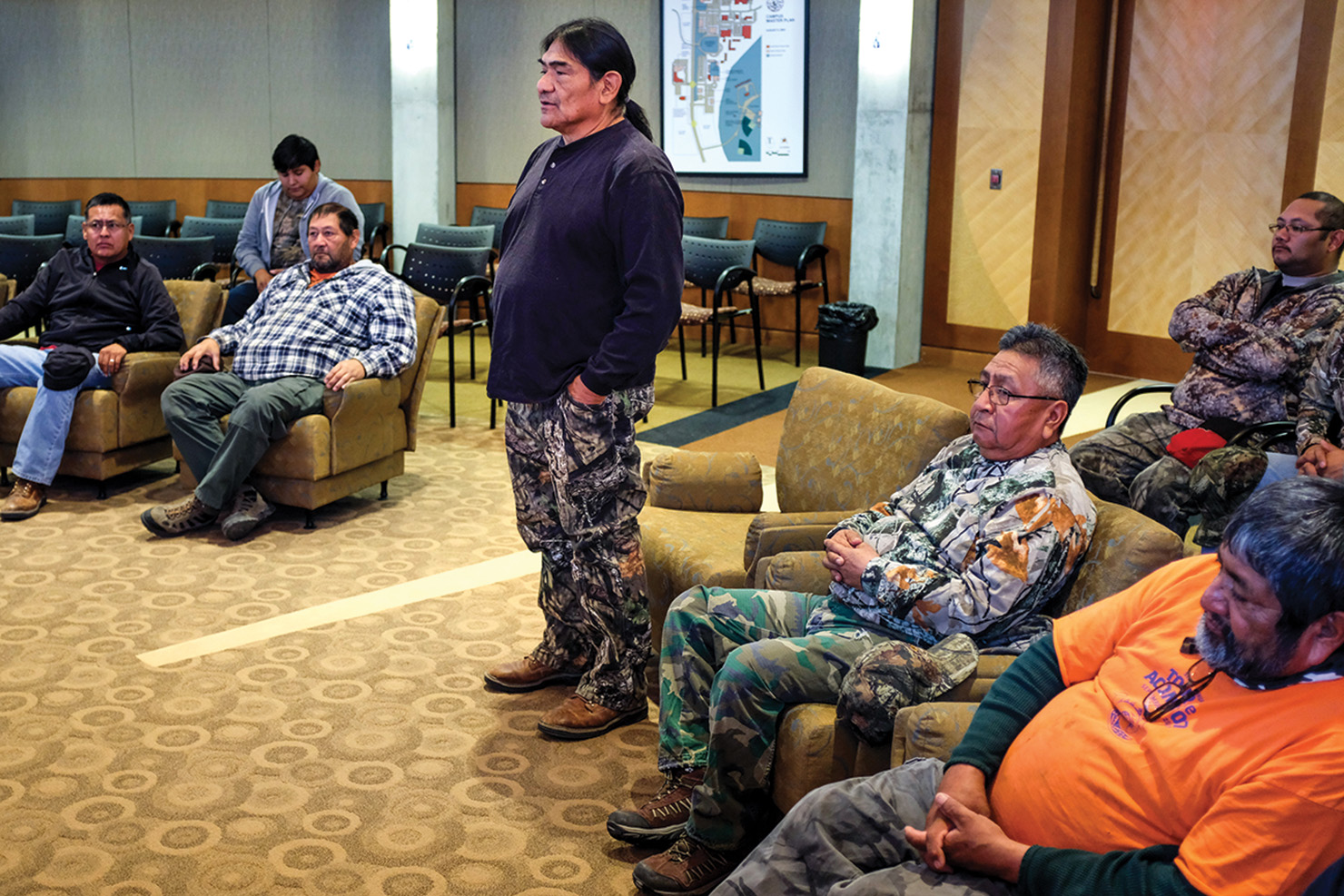Since 2003 the Southern Ute Indian Tribe has hosted eight different Pueblos as well as the Hopi Tribe for cultural hunts on Southern Ute lands. Many Pueblos and other tribes in the southwest are either not blessed with the land base or the abundance of wildlife that the Southern Ute Indian Tribe has; in some cases, this makes hunting all but impossible on their lands.
“The deer is very precious to us, they bring us life,” said Vaughn Sarracino, Religious Kiva Leader, Pueblo of Laguna. Sarracino was one of the many hunters who gave their thanks to the leadership of the Southern Ute Indian Tribe in Council Chambers on Monday, Nov. 13. Over the past several years Laguna Pueblo has reciprocated hunting opportunities on their lands for Southern Ute tribal members. Species such as elk, pronghorn and Barbary sheep have been harvested by Southern Ute Tribal Members on the Pueblo.
“Helping to facilitate these hunt requests is one of the more interesting and rewarding responsibilities we have in the Wildlife Division, because it really demonstrates the importance of maintaining the traditional, cultural identity of the various Southwest tribes, and also demonstrates the generosity of Southern Ute with the sharing of its abundance,” Wildlife Division Head Steve Whiteman said.
Mule deer are culturally important to many Southwestern tribes, who use their parts in different ceremonies and use the meat to feed their communities. “We have that connection and take pride in our traditions as well,” Councilwoman Lorelei Cloud said.
Cultural leaders are typically chosen by their respective tribal leaders to participate in these hunts. Non-hunting helpers sometimes attend and assist the hunters in the field both with ceremony as well as dressing and carrying animals out.
“I hope we can keep this tradition going,” Councilman Adam Red said.
This year both Cochiti Pueblo and Laguna Pueblo made requests to harvest deer on Southern Ute lands. The Cochiti Pueblo hunt was approved for Nov. 6 – 9, with a bag limit of four either-sex deer and three does. The Cochiti hunters ultimately filled their tags with three small bucks and four does. The Laguna Pueblo hunt was approved for Nov. 13 – 17 with a bag limit of five either-sex deer and five does. The Laguna hunters filled their tags in just two days and left with five small bucks and five does.
“We feel that these were put here by the creator, they are here for us to share,” Southern Ute Chairman Clement Frost said. “We are fortunate to have all those animals: buffalo, elk, deer and the eagles that watch over us.”
I think that these hunts are fairly unique in Indian Country. There may be examples of other tribes offering such hunts, but I’m not aware of it happening. For many years the leadership of the Southern Ute Tribe has recognized the importance of sharing the abundant game resources on the reservation with other Native people, said Southern Ute Wildlife Biologist, Aran Johnson. “In the big picture of what’s available for mule deer on the Southern Ute Reservation, these are small requests. The tribes that are requesting have legitimate need for these animals and the approval of these hunts by Southern Ute leadership means a great deal to them,” he said.
Government-to-government request are made by other tribes to Southern Ute leadership to harvest animals, typically mule deer. The request is forwarded from Southern Ute leadership to the Southern Ute Wildlife Division, which they present to the Tribal Member Wildlife Advisory Board. The Board discusses things like hunt dates, hunt area, as well as antler point restrictions for buck deer. Typically, there is a three point per side antler point restriction, this excludes eye guards on the antler. Both either-sex and female only tags are issued for the cultural hunts. An either sex tag gives the hunters the option of harvesting a doe if they are having trouble finding a buck that satisfies the antler point restriction. Division of Wildlife brings the Board’s recommendations to Tribal Council for their consideration and approval. Requests from other tribes must be received no later than July, 1.
The visiting members of the Laguna Pueblo presented the Southern Ute Tribal Council with an offering of traditional oven bread, boxes of food and other staples in recognition of the Tribe’s generosity and continued support for the cultural hunts.
“It’s an honor to see you here again, stay safe and enjoy our beautiful land,” Councilwoman Amy Barry said.




